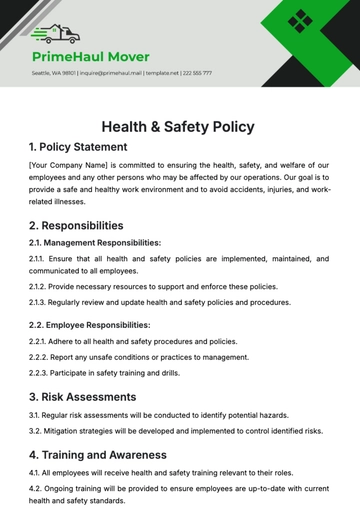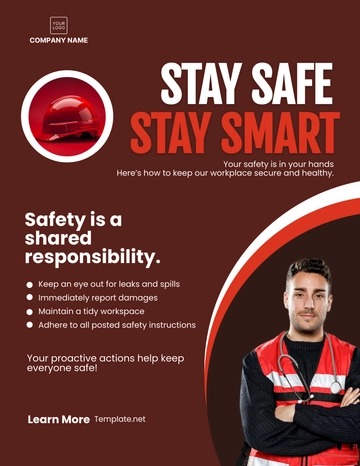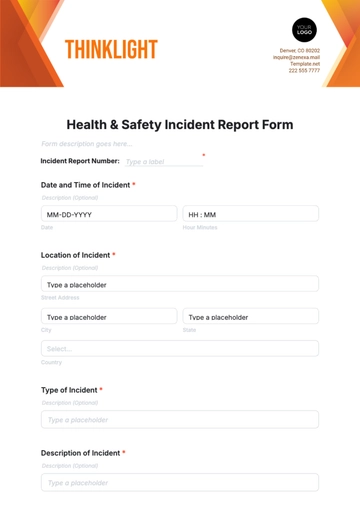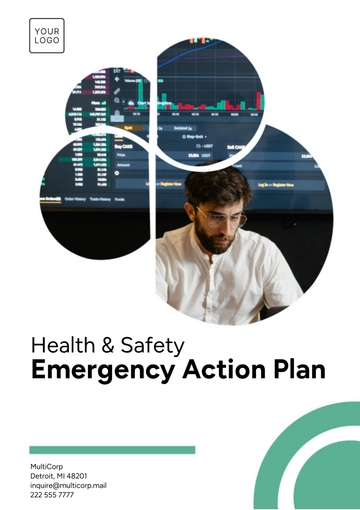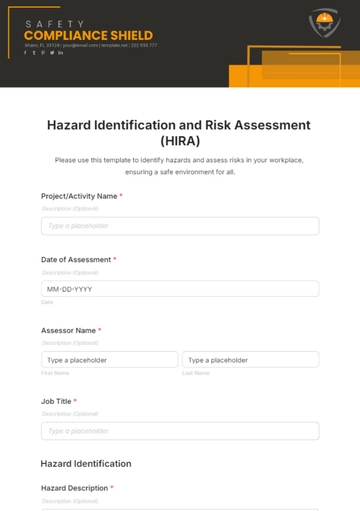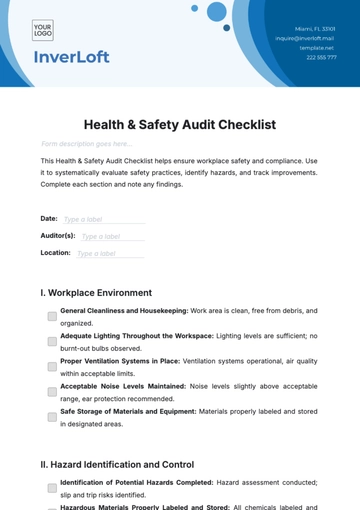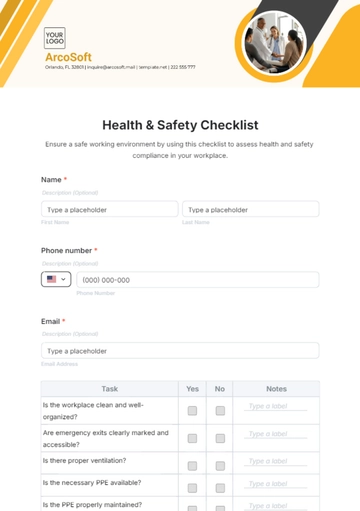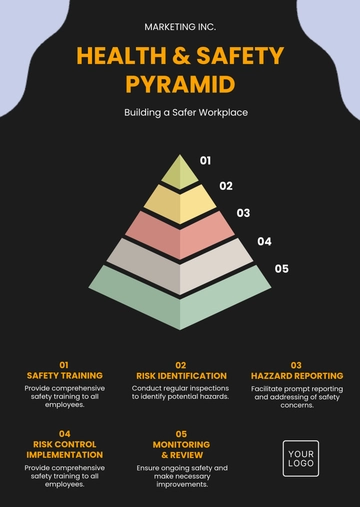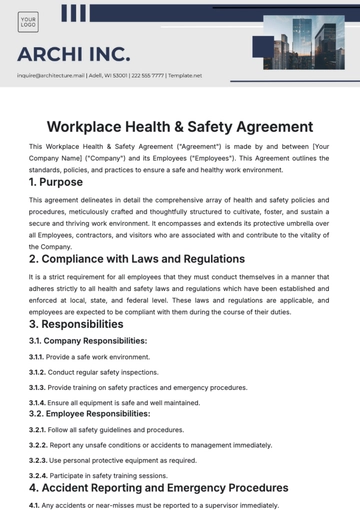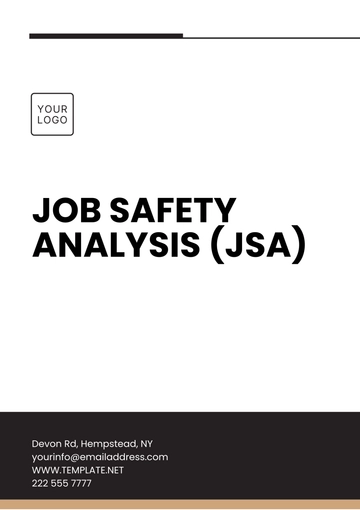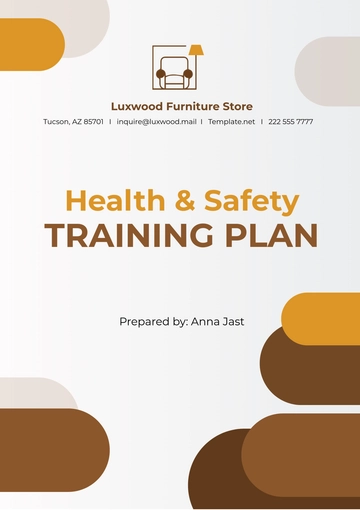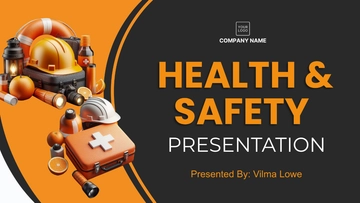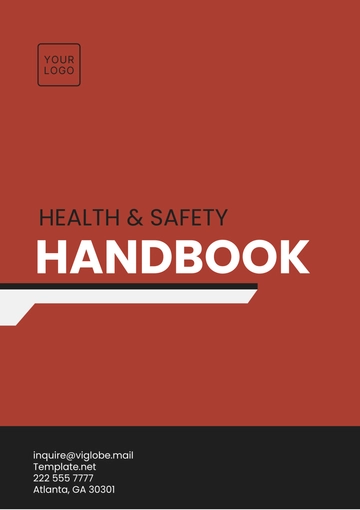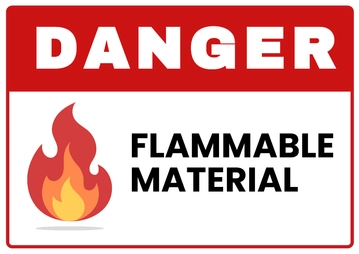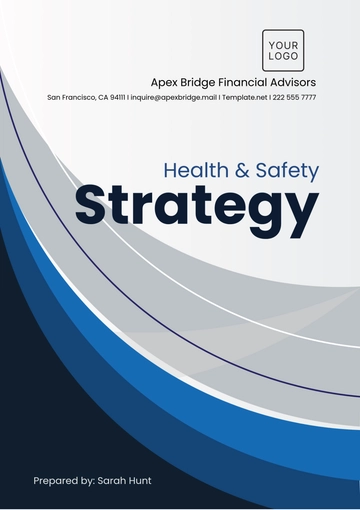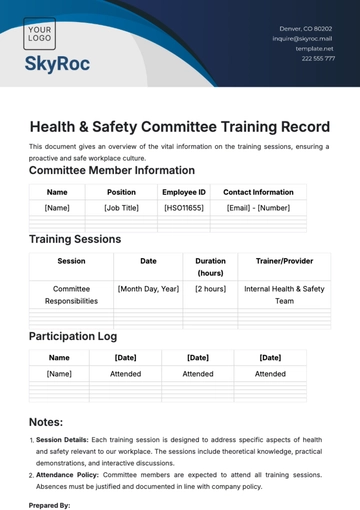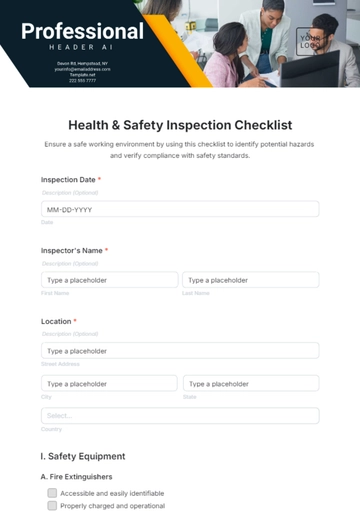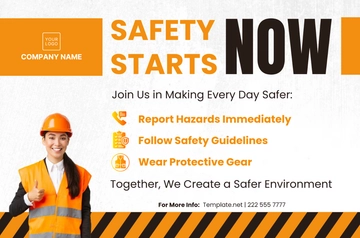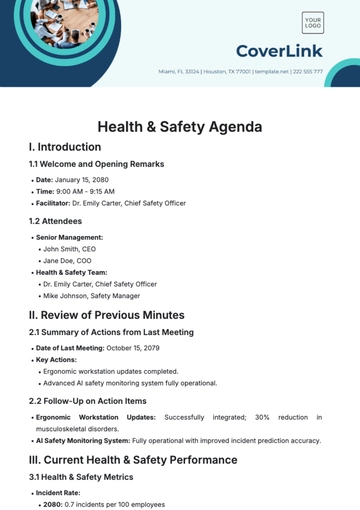Free Health & Safety SOP for Communication
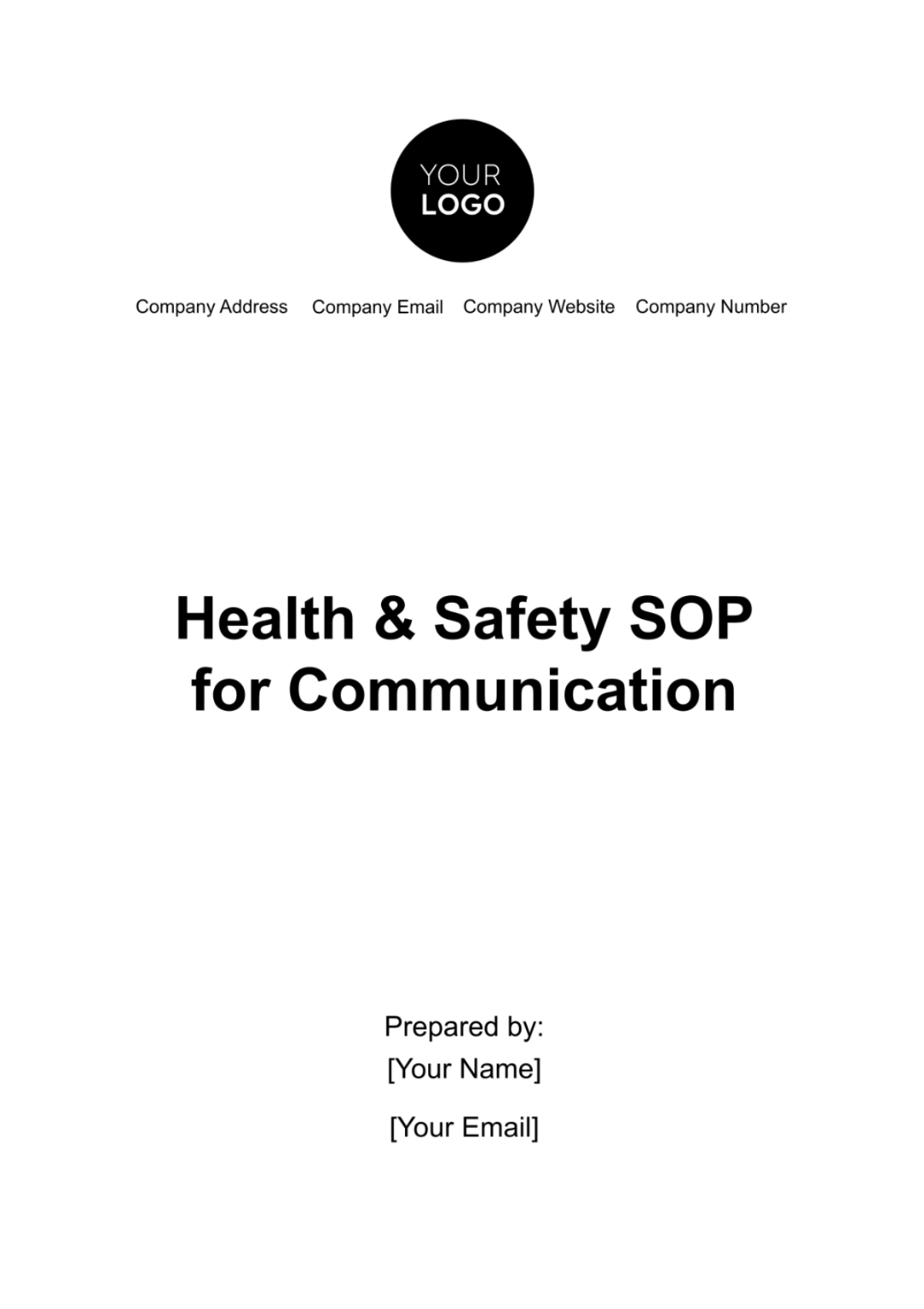
I. Purpose
This SOP aims to establish guidelines and expectations for effective communication practices that will contribute to the attainment and maintenance of a safe and healthy work environment. This document aims to enhance awareness, facilitate timely reporting of incidents and hazards, and promote a culture of open dialogue among all stakeholders. Through adherence to these standard procedures, the organization seeks to minimize risks, prevent accidents, and foster a collective commitment to workplace safety.
II. Scope
This document applies to all employees, contractors, and relevant stakeholders involved in the organization's operations. It encompasses the standard guidelines for communication within and between departments, addressing the need to optimize health and safety. It extends to incident reporting, emergency communication, training programs, and continuous improvement initiatives.
III. Terms and Definitions
A. Incident
An unplanned event or occurrence that results in, or has the potential to cause, injury, illness, or damage.
B. Hazard
A source or situation with the potential to cause harm in terms of human injury, ill-health, damage to property, or the environment.
C. Stakeholders
Individuals or groups directly or indirectly affected by, or having an interest in, the organization's workplace health and safety performance.
D. Emergency Communication
The process of conveying information during critical situations, including procedures for evacuation and emergency contact points.
E. Feedback Mechanisms
Systems for collecting input and insights from employees regarding the effectiveness of workplace health and safety communication processes.
F. Record Keeping
The systematic documentation and storage of workplace health and safety-related information, including incident reports and safety meeting records.
G. Compliance
Adherence to relevant laws, regulations, and industry standards governing workplace health and safety communication.
H. Formal Communication Channels
Established methods for transmitting information within the organization's official structure, often involving predefined processes and protocols.
I. Informal Communication Channels
Spontaneous or unofficial means of exchanging information among employees, fostering a more casual and immediate exchange of ideas.
J. Safety Culture
The shared values, beliefs, and practices within an organization that prioritize safety, influencing behavior and decision-making at all levels.
IV. Responsibilities
The table below delineates specific responsibilities across various roles and departments along with the responsible person/party:
Responsible Person/Party | Role | Responsibilities |
Irene Wilson | Health and Safety Manager | Oversee the development and implementation of workplace health and safety communication strategies. |
Effectively defined responsibilities are crucial for promoting a culture of accountability and collaboration in workplace health and safety. By clearly outlining roles and expectations, this ensures that all members of the organization understand their part in maintaining a safe work environment. A well-defined responsibilities enhance the efficiency and effectiveness of workplace health and safety communication, contributing to the organization's commitment to a safe and healthy workplace.
V. Communication Channels
A. Formal Communication Channels
Meetings
Regularly scheduled meetings serve as a platform for disseminating important health and safety information and updates.
Memoranda and Notices
Official written communications, such as memoranda and notices, are distributed to all employees to convey critical health and safety information.
Training Sessions
Structured training sessions are conducted to educate employees on health and safety policies and procedures.
B. Informal Communication Channels
Supervisor-Employee Interactions
Casual and direct discussions between supervisors and employees provide an avenue for addressing safety concerns promptly.
Workplace Posters and Bulletin Boards
Visual aids, such as posters and bulletin boards, display important health and safety information for easy reference in the workplace.
Employee Suggestion Programs
Programs encouraging employees to share safety improvement ideas contribute to a collaborative safety culture.
VI. Information Accessibility
A. Communication Platforms
Diverse Platforms
Ensure health and safety information is accessible through various platforms, including intranet, emails, and mobile applications.
User-Friendly Interfaces
Design interfaces that are user-friendly, promoting easy access to relevant health and safety materials.
Accessibility Standards
Adhere to accessibility standards to accommodate all employees, including those with disabilities.
B. Language and Cultural Considerations
Multilingual Communication
Provide health and safety information in multiple languages spoken by the workforce.
Cultural Sensitivity
Consider cultural nuances when developing communication materials to enhance understanding and resonance.
Accessibility Education
Educate employees on the availability and usage of multilingual resources to foster inclusivity.
VII. Employee Engagement
A. Interactive Communication
Two-Way Communication
Encourage two-way communication channels, allowing employees to actively participate in health and safety discussions.
Employee Forums
Establish forums or platforms for employees to share experiences, insights, and suggestions related to health and safety.
Leadership Involvement
Ensure leadership actively engages in health and safety communication, fostering a culture of openness and collaboration.
B. Recognition and Incentives
Acknowledgment Programs
Implement programs to recognize and acknowledge employees for their contributions to health and safety initiatives.
Incentive Structures
Develop incentive structures that reward proactive engagement in health and safety practices.
Communication of Recognition
Effectively communicate instances of recognition to the entire workforce, reinforcing positive behaviors.
VIII. Reporting Procedures
A. Incident Reporting
Employees
Should immediately report all incidents, including near misses, to their supervisors.
Supervisors
Document and report incidents to the Health and Safety Manager for assessment.
Health and Safety Manager
Initiates investigations and ensures corrective actions are implemented to prevent future incidents.
B. Hazard Reporting
Employees
Promptly report identified hazards to their supervisors.
Supervisors
Assess and document reported hazards, implementing interim controls if necessary.
Health and Safety Manager
Oversees the resolution of identified hazards and ensures preventive measures are implemented.
C. Emergency Reporting
All Personnel
Immediately report emergencies, accidents, or unsafe conditions to the designated emergency contact.
Emergency Response Team
Activate emergency communication protocols and respond promptly to mitigate risks.
Health and Safety Manager
Ensure that all emergency incidents are thoroughly documented, reviewed, and used for continuous improvement.
IX. Emergency Communication
A. Emergency Protocols Activation
Initiation
In the event of an emergency, designated personnel shall promptly activate the established emergency communication protocols.
Notification
Ensure timely and accurate notification to all relevant parties, including employees, emergency responders, and appropriate authorities.
Communication Equipment Readiness
Regularly inspect and maintain communication equipment to guarantee functionality during emergency situations.
B. Evacuation Procedures
Evacuation Routes
Clearly communicate designated evacuation routes and assembly points to all employees.
Emergency Contact Information
Maintain an up-to-date list of emergency contacts and distribute this information to all personnel.
Drills and Training
Conduct regular emergency drills to familiarize employees with evacuation procedures and enhance response efficiency.
X. Documentation and Record Keeping
A. Incident Documentation
Timely Recording
Ensure incidents are promptly documented, including details such as date, time, location, and individuals involved.
Detailed Descriptions
Provide thorough descriptions of incidents, including the sequence of events leading to the occurrence.
Witness Statements
Include statements from witnesses, if available, to provide additional perspectives on the incident.
B. Safety Meetings Records
Agenda and Attendance
Document meeting agendas and maintain records of attendance to ensure comprehensive coverage of safety topics.
Minutes of Meetings
Record detailed minutes of safety meetings, highlighting discussions, decisions, and action items.
Distribution
Distribute meeting records to relevant personnel promptly after each session.
XI. Feedback Mechanisms
A. Employee Input
Anonymous Channels
Establish confidential channels for employees to provide feedback on safety concerns without fear of reprisal.
Regular Surveys
Conduct periodic surveys to gauge employee perceptions of safety communication and identify areas for improvement.
Feedback Analysis
Regularly analyze feedback data to identify trends and implement targeted improvements.
B. Supervisor Feedback Sessions
Scheduled Discussions
Conduct scheduled feedback sessions between supervisors and their teams to address concerns and gather insights.
Open-Door Policy
Promote an open-door policy, encouraging employees to approach supervisors with safety-related feedback at any time.
XII. Review and Revision
A. Periodic Reviews
Scheduled Assessments
Conduct scheduled assessments to evaluate the effectiveness of health and safety communication processes.
Stakeholder Feedback
Integrate feedback from employees, supervisors, and external stakeholders into the review process.
B. Documentation Updates
SOP Revisions
Regularly revise the SOP to reflect changes in health and safety regulations, communication strategies, and organizational structures.
Version Control
Maintain a version control system to track revisions and ensure stakeholders have access to the most current SOP.
- 100% Customizable, free editor
- Access 1 Million+ Templates, photo’s & graphics
- Download or share as a template
- Click and replace photos, graphics, text, backgrounds
- Resize, crop, AI write & more
- Access advanced editor
Introducing Template.net's Health & Safety SOP for Communication Template, an essential tool for ensuring effective communication in safety protocols. This customizable template, editable in our Ai Editor Tool, enables businesses to tailor communication strategies to their specific needs. Streamline safety procedures, enhance clarity, and promote workplace safety with ease. Simplify communication processes and elevate safety standards with our user-friendly platform.

